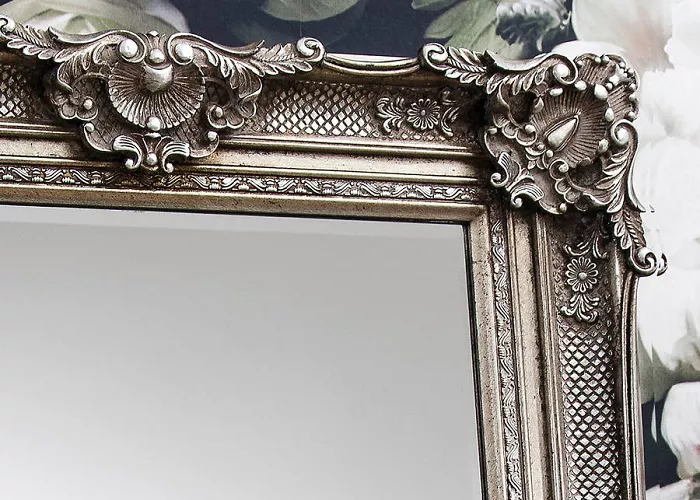Antique mirrors hold a special allure for collectors, interior designers, and history enthusiasts alike. Their intricate craftsmanship, historical significance, and ability to transform spaces make them highly sought-after. But should you invest in one? This article explores the value, potential risks, and rewards of purchasing antique mirrors while offering expert guidance on making a well-informed decision.
Understanding the Allure: What Makes Antique Mirrors So Special?
The Art of Craftsmanship: How Were Antique Mirrors Made?
Unlike modern mass-produced mirrors, antique mirrors boast superior craftsmanship. Handmade using time-honored techniques, these mirrors feature unique materials such as:
- Mercury-backed glass (common before the 19th century)
- Hand-carved wooden frames with intricate designs
- Gilded embellishments often made of gold leaf or silver
The materials and methods used in antique mirror production set them apart from contemporary alternatives, making them both artistic and functional pieces.
A Glimpse Into History: Why Do Antique Mirrors Hold Cultural Significance?
Each antique mirror has a story to tell. From reflecting the grandeur of Victorian-era parlors to gracing the walls of 18th-century French châteaux, these mirrors serve as historical artifacts. The ownership of a well-preserved antique mirror connects you to past centuries, enriching your space with a tangible link to history.
Aesthetic Appeal: How Can Antique Mirrors Elevate Interior Spaces?
The charm of antique mirrors extends beyond their historical value. Their unique patina, elaborate frames, and distinct reflective properties create an atmosphere that modern mirrors simply cannot replicate. They can:
- Enhance the perception of space by adding depth
- Bring warmth and character to contemporary interiors
- Serve as statement pieces in a well-curated collection
Evaluating Authenticity: How Can You Tell If a Mirror Is Truly Antique?
Identifying Key Features: What Distinguishes an Antique Mirror from a Replica?
Before investing in an antique mirror, it’s crucial to determine its authenticity. Here’s what to look for:
- Aging of Glass: Genuine antique mirrors often exhibit slight distortions, dark spots, or uneven aging.
- Frame Construction: Old mirrors are typically framed with solid wood and show signs of hand-carving or period-specific craftsmanship.
- Mirror Backing: Traditional mercury-backed or silver-backed mirrors may have oxidized over time, leading to unique discolorations.
- Joinery Techniques: Dovetail or peg construction in frames indicates age, as modern techniques use glue and staples.
Expert Verification: Should You Consult an Appraiser?
For high-value acquisitions, consulting an antiques expert or appraiser is advisable. These professionals can:
- Confirm the mirror’s age and origin
- Evaluate restoration work (if any)
- Provide an estimated market value
Financial Considerations: Are Antique Mirrors a Good Investment?
Market Trends: Is There a Demand for Antique Mirrors?
The demand for antique mirrors fluctuates based on trends in interior design, historical interest, and collector preferences. While some styles remain perennially popular (e.g., Baroque, Rococo, and Art Deco), others may fall in and out of favor. Monitoring auction results and dealer prices can provide insight into current market trends.
Appreciation in Value: Do Antique Mirrors Retain or Increase Their Worth?
Like other antiques, mirrors can appreciate in value, particularly those from renowned makers or historical periods. Factors influencing value include:
- Age and provenance
- Condition and originality (restored pieces may be less valuable)
- Rarity and demand
However, not all antique mirrors guarantee financial gain, so buyers should prioritize aesthetic and personal value alongside investment potential.
Budgeting Wisely: How Much Should You Spend on an Antique Mirror?
Prices for antique mirrors range from a few hundred to several thousand dollars, depending on factors such as age, design, and craftsmanship. Before making a purchase:
- Set a budget based on your financial comfort level.
- Compare prices across multiple dealers, online marketplaces, and auction houses.
- Be cautious of deals that seem too good to be true—counterfeit pieces exist in the market.
Potential Risks: What Challenges Might You Face When Buying Antique Mirrors?
Condition Issues: How Can You Spot Damage?
Age-related wear is common in antique mirrors, but excessive damage can lower value and usability. Common issues include:
- Cracked or overly scratched glass
- Water damage on wooden frames
- Poor past restorations that compromise authenticity
Hidden Costs: Are There Additional Expenses Beyond the Purchase Price?
Owning an antique mirror may come with unexpected costs, such as:
- Restoration fees if repairs are needed
- Transportation and insurance costs for large or fragile pieces
- Custom framing or mounting if the mirror requires reinforcement
Scams and Misrepresentation: How Can You Avoid Fraudulent Sellers?
With the rise of online antique sales, the risk of encountering misrepresented or fake pieces has increased. To safeguard against scams:
- Purchase from reputable dealers and auction houses.
- Request detailed provenance and condition reports.
- Examine return policies before finalizing transactions.
Making the Right Choice: Where Should You Buy an Antique Mirror?
Physical Stores vs. Online Marketplaces: Which Is Better?
Antique Shops & Auctions:
- Offer hands-on examination before purchase
- Allow direct negotiation with sellers
Online Marketplaces & Dealers:
- Provide access to a wider selection
- Require thorough vetting of seller credibility
Best Sources: Where Can You Find Authentic Antique Mirrors?
Consider sourcing from:
- Established antique dealers
- Auction houses (e.g., Sotheby’s, Christie’s, Bonhams)
- Estate sales and flea markets
- Specialty online antique platforms
Conclusion
Purchasing an antique mirror is both an aesthetic and financial decision. Whether you seek a statement piece for your home, a historical artifact, or a potential investment, understanding authenticity, market trends, and potential risks is crucial. If chosen wisely, an antique mirror can offer a blend of elegance, history, and timeless value that no modern counterpart can replicate.
For those willing to invest time and effort into researching and selecting the right piece, antique mirrors can be an enriching addition to any collection or interior space.

